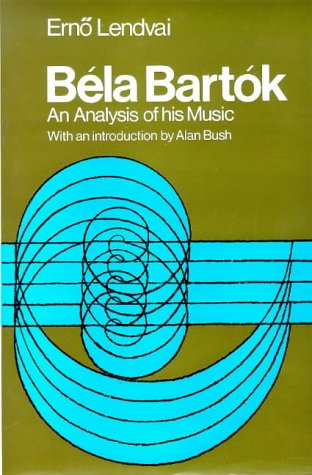Bela Bartok: An Analysis of His Music book download
Par cox jan le vendredi, mars 31 2017, 11:26 - Lien permanent
Bela Bartok: An Analysis of His Music by Ernõ Lendvai


Bela Bartok: An Analysis of His Music Ernõ Lendvai ebook
Page: 115
Format: pdf
ISBN: 0900707046, 9780900707049
Publisher: Humanities Pr
Subjecting it to systematic study, he soon gained a new basis for his musical esthetics. Bela Bartok: An Analysis of His Music. �When I was studying music in Budapest, I was lucky enough to encounter Bela Bartok in very varied circumstances. When Béla Bartók first transcribed a Hungarian folk tune in the field in 1904, he realized that this world of music was unknown to him. ϼ�246)Erno Lendvai,Béla Bartók:An Analysis of his Music (Mwm Jersey,1971). And the piece of music mentioned most frequently is Bartok's “Music for Strings, Percussion and Celesta .” Erno Lendvai write extensively on the topic in his book, Bela Bartok: An Analysis of His Music . "Professor Sever Tipei sent this in response to a student who asked about the Golden Ratio in music: The golden mean ratio can be See also Erno Lendvai Bela Bartok : Analysis of His Music Dr. So I've gone for Bela Bartok (1881-1945) instead. Béla Bartók and Turn-of-the-Century Budapest Judit Frigyesi University of California Press 1 edition This is neither a conventional biography of Bartók, nor a systematic analysis of his musical oeuvre. Paul Wilson lists as the most prominent characteristics of Bartók's music the influence of the folk music of rural Hungary and Eastern Europe and the art music of central and western Europe, and his changing attitude toward (and use of) tonality, but without the use of the traditional Ernő Lendvai (1971) analyses Bartók's works as being based on two opposing systems, that of the golden section and the acoustic scale, and tonally on the axis system (Ibid, 7).